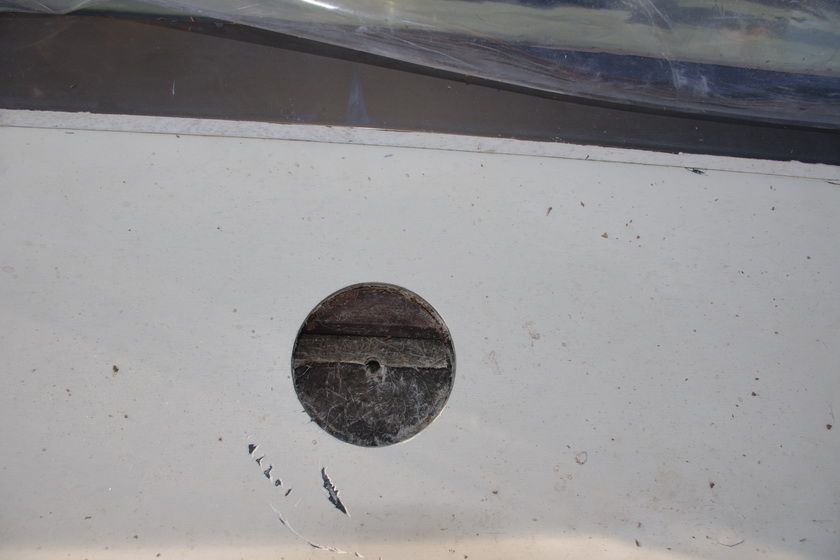Vincentc
Legendary Member
- Joined
- Jun 3, 2008
- Messages
- 1,514
- Status
- OWNER - I own a Hatteras Yacht
- Hatteras Model
- 43' DOUBLE CABIN (1970 - 1984)
A moisture meter is a dangerous thing to play with. After finding an area of significant moisture in front of the windshield I felt compelled to do something, and had no plans to run the boat Sunday. There was a lot of moisture, no water just in front of the frame, apparently coming from the stbd and center frames. I opened up and cleaned out the wet areas and am now letting it dry.



It was probably not helpful to drill into the slope just below the windshield, but the meter pegged there and curiousity got the better of me and there was indeed water there. I believe it would have drained out on its own once the wet core was removed. In case you want to to see what it looks like under the slope see above.
My Question:
I need to find the source of the leak coming from the windshield and figure out how to fix it.
I believe I know how to remove and re-bed the glass. I could also have a leak around the frame. It does not look like the frame is removable, I see there are screw heads along the bottom of the frame behind the glass pointing down into the fiberglass. Any idea what the screws are attached to. I want to bed the screw holes with epoxy but do not want to mess anything up. Can anyone tell me how the screws are attached?
Thanks



It was probably not helpful to drill into the slope just below the windshield, but the meter pegged there and curiousity got the better of me and there was indeed water there. I believe it would have drained out on its own once the wet core was removed. In case you want to to see what it looks like under the slope see above.
My Question:
I need to find the source of the leak coming from the windshield and figure out how to fix it.
I believe I know how to remove and re-bed the glass. I could also have a leak around the frame. It does not look like the frame is removable, I see there are screw heads along the bottom of the frame behind the glass pointing down into the fiberglass. Any idea what the screws are attached to. I want to bed the screw holes with epoxy but do not want to mess anything up. Can anyone tell me how the screws are attached?
Thanks

